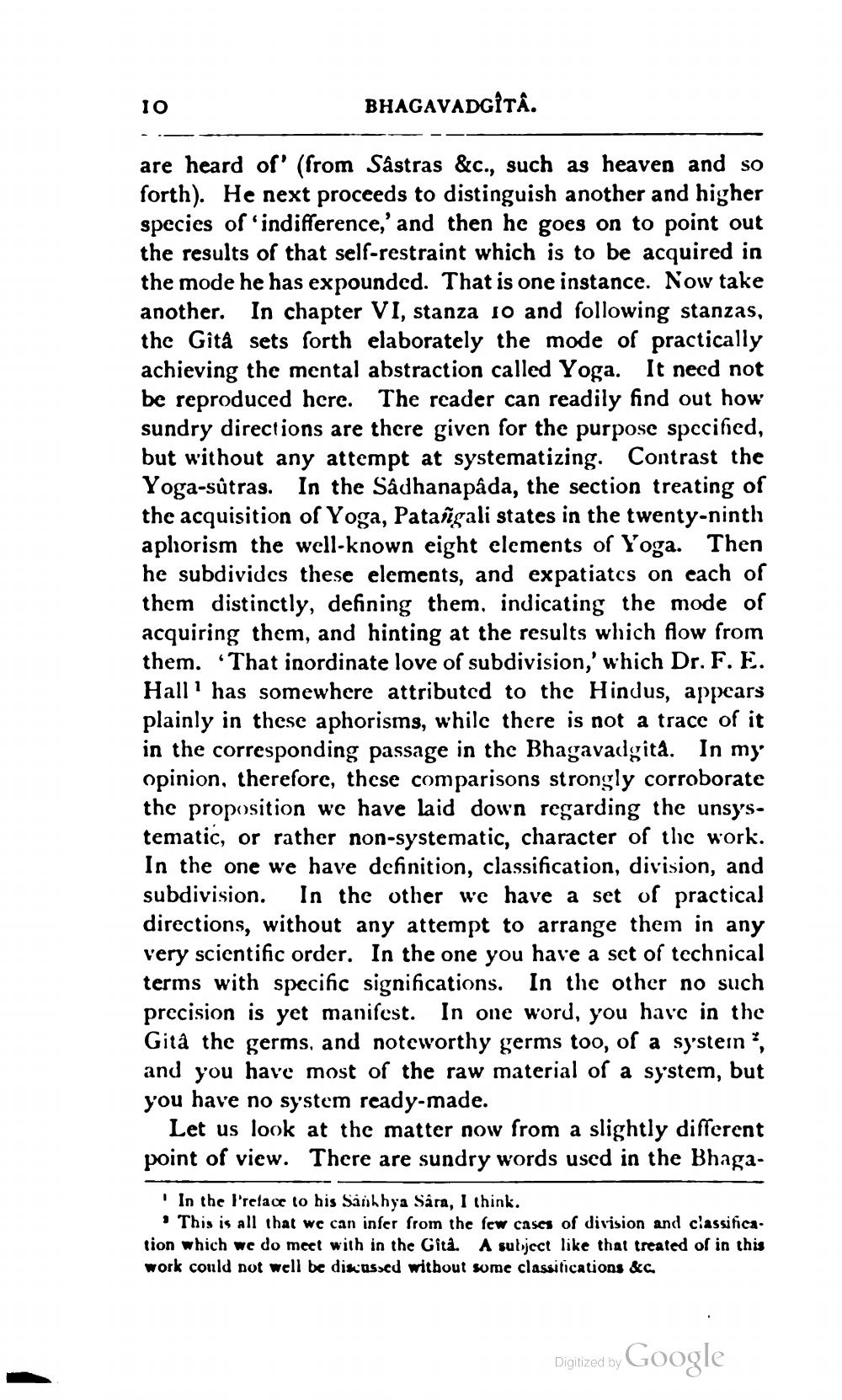________________
10
BHAGAVADGÎTA.
are heard of' (from Sastras &c., such as heaven and so forth). He next proceeds to distinguish another and higher species of indifference,' and then he goes on to point out the results of that self-restraint which is to be acquired in the mode he has expounded. That is one instance. Now take another. In chapter VI, stanza 10 and following stanzas, the Gità sets forth elaborately the mode of practically achieving the mental abstraction called Yoga. It need not be reproduced here. The reader can readily find out how sundry directions are there given for the purpose specified, but without any attempt at systematizing. Contrast the Yoga-sútras. In the Sadhanapâda, the section treating of the acquisition of Yoga, Patañgali states in the twenty-ninth aphorism the well-known eight elements of Yoga. Then he subdivides these elements, and expatiates on each of them distinctly, defining them, indicating the mode of acquiring them, and hinting at the results which flow from them. “That inordinate love of subdivision,' which Dr. F. E. Hall' has somewhere attributed to the Hindus, appears plainly in these aphorisms, while there is not a trace of it in the corresponding passage in the Bhagavadgita. In my opinion, therefore, these comparisons strongly corroborate the proposition we have laid down regarding the unsystematic, or rather non-systematic, character of the work. In the one we have definition, classification, division, and subdivision. In the other we have a set of practical directions, without any attempt to arrange them in any very scientific order. In the one you have a set of technical terms with specific significations. In the other no such precision is yet manifest. In one word, you have in the Gitâ the germs, and noteworthy germs too, of a systein *, and you have most of the raw material of a system, but you have no system ready-made.
Let us look at the matter now from a slightly different point of view. There are sundry words used in the Bhaga
' In the l'relace to his Särihhya Sara, I think.
• This is all that we can inser from the few cases of division and classifica. tion which we do meet with in the Gità. A subject like that treated or in this work could not well be discussed without some classifications &c.
Digitized by Google




